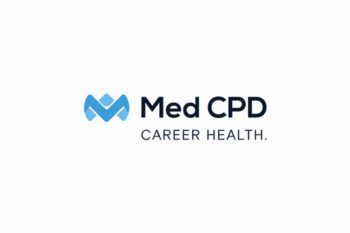What is a GP’s role in disordered eating? (Part 2/2)
November 13, 2023
Modern approach to management
Addressing eating disorders demands a holistic strategy, ranging from outpatient interventions to inpatient care in dire situations. An individual’s journey is influenced by myriad factors: from beliefs about treatment, symptom severity, to even financial constraints. The overarching approach is multidisciplinary, integrating psychological, medical, pharmacological, nutritional, and physical activity interventions.
Contemporary protocols stress the importance of an integrated approach, making collaboration between health care professionals paramount. For instance, someone diagnosed with anorexia nervosa in Australia can access up to 40 psychological treatment sessions and 20 dietetic sessions in a year under the Medicare Benefits Schedule. The collaborative approach often involves a team of experts, each specialising in various facets of the disorder.
Eating disorders aren’t just a list of symptoms or behaviours. They’re complex, multifaceted issues that challenge societal perceptions, healthcare systems, and even the individuals themselves. As a medical professional, understanding this complexity is the first step to effective recognition and intervention. The nuances in diagnosis, the expanding research into interventions, and the holistic approach to treatment are all components that should be at the forefront of a practitioner’s mind when a patient steps into their consultation room.
As medical professionals, it’s not just about recognising the obvious signs. It’s about understanding the wider context, the underlying issues, and the societal pressures that might be impacting a person’s eating behaviour. With the right approach, awareness, and resources, medical practitioners can play a pivotal role in addressing and managing these disorders.
Strengthening the foundation for eating disorder treatment in Australia and New Zealand
In the realm of healthcare, the intricacies of treating eating disorders cannot be overstated. With their complex nature and multi-faceted symptoms, providing optimal care requires not just an understanding, but a specialised approach. Australia’s acknowledgment of this need came to the forefront in 2017, when the National Agenda for Eating Disorders reported a concerning statistic: a whopping 97% of health care clinicians lacked the required training in treating eating disorders. Responding to this glaring gap, the National Eating Disorders Collaboration (NEDC) ushered in a set of core competencies, aiming to bolster the capabilities of the medical workforce. Furthermore, the Australia and New Zealand Academy for Eating Disorders (ANZAED) established credentials that offer formal recognition of the necessary qualifications, ensuring that practitioners are armed with the right tools. This has been a fantastic resource for general practitioners and health professionals who are becoming more aware of eating disorders and the myriad of presentations.
Assessment
Accurate diagnosis is the cornerstone of any effective treatment. While numerous screening tools vie for prominence in the domain of eating disorders, their utility is often hampered by a lack of high predictive power. Rising above the rest, the Eating Disorder Examination (EDE) stands as the gold standard in diagnostic interviews. Its derivative, the self-report EDE-Q, has cemented its importance, being a mandatory component for diagnosing most eating disorders. However, the efficiency of screening tools like the SCOFF and the Screen for Disordered Eating (SDE) shouldn’t be underestimated, especially when a rapid assessment is pivotal.
The pharmacological avenue
The realm of pharmacological interventions for eating disorders remains a complex mosaic. No medication stands out as a universally accepted first-line treatment. Despite the promise shown by second-generation antipsychotics and antidepressants, their efficacy is often debated. The treatment landscape further expands with trials of agents like SSRIs, topiramate, and lisdexamfetamine, primarily for binge eating disorders. Yet, standalone drug treatments aren’t widely endorsed, given the array of associated limitations. Pharmacological therapies should be considered secondary to a holistic view of the patient and failed psychological therapies.
The risks of refeeding syndrome
Medical literature consistently acknowledges the perils of the refeeding syndrome. However, recent research champions an evolution in hospital care, advocating for quicker weight regain protocols. Such assertive refeeding protocols, paired with comprehensive medical monitoring and nutritional fortification (like phosphate), have shown promising safety records. Although this is a rare complication of an otherwise life threatening situation, it should be considered a risk throughout the treatment process.
Prognosis and outcomes
Achieving better outcomes in treating eating disorders hinges on early detection and proactive treatment engagement. A short illness duration and swift treatment shift typically bode well for patient recovery. Disturbingly, in Australia, an average delay of 5.28 years was recorded between symptom onset and treatment initiation for patients aged 13 years and above. Strikingly, bulimia nervosa and binge eating disorder patients exhibited longer treatment delays than those with anorexia nervosa, arguably due to the overt physical manifestations of the latter prompting quicker interventions from families. Factors fueling these delays include low health literacy, societal stigmas, financial barriers, and prolonged wait times, among others. Especially concerning is the under-referral of atypical anorexia nervosa patients to specialised services despite their comparable prevalence to traditional anorexia cases.
Still, there’s reason for optimism. A 22-year follow-up study recorded recovery rates of 62.8% for anorexia nervosa and 68.2% for bulimia nervosa patients. Data on binge eating disorder leans toward positive recovery trajectories, albeit being less comprehensive. The trajectory of other disorders, like ARFID and OSFED/UFED, remains more enigmatic due to newer diagnostic introductions and the fluidity of disorder categorizations.
Looking forward
Despite advancements, the quest for a gold standard of care remains ongoing. Interestingly, no psychological therapy has emerged as categorically superior for anorexia nervosa. A promising evolution is Australia’s Wandi Nerida residential facility, launched in 2021 as an alternative to traditional inpatient care. Preliminary studies associate residential-based treatments with positive outcomes, especially given their inclusion of individuals with personal experience. Yet, the absence of randomised controlled trials emphasises the need for further validation.
Recent therapeutic avenues explore the potential of weight-neutral practices and alternative psychological therapies. Psychedelics, particularly psilocybin and ketamine, show preliminary efficacy for treating anorexia nervosa. Simultaneously, neuromodulation techniques like transcranial direct current stimulation display potential in addressing binge eating disorder and bulimia nervosa, by fortifying self-regulatory control. Future endeavors need to be backed by comprehensive research on diverse participant samples to pinpoint the exact mechanisms of these novel treatments.
Eating disorders, once shadowed in misconceptions, are now recognised as pervasive mental health issues affecting a broad demographic spectrum. Although robust clinical guidelines and evidence support the effectiveness of primary psychological therapies, supplementary treatments like medications, especially novel ones like psychostimulants, are still under examination. There’s a clear shift towards more patient-centric care, with a focus on addressing treatment dropout rates and devising alternatives to conventional hospital programs. Respectful care for patients, regardless of weight, remains an overarching objective.












